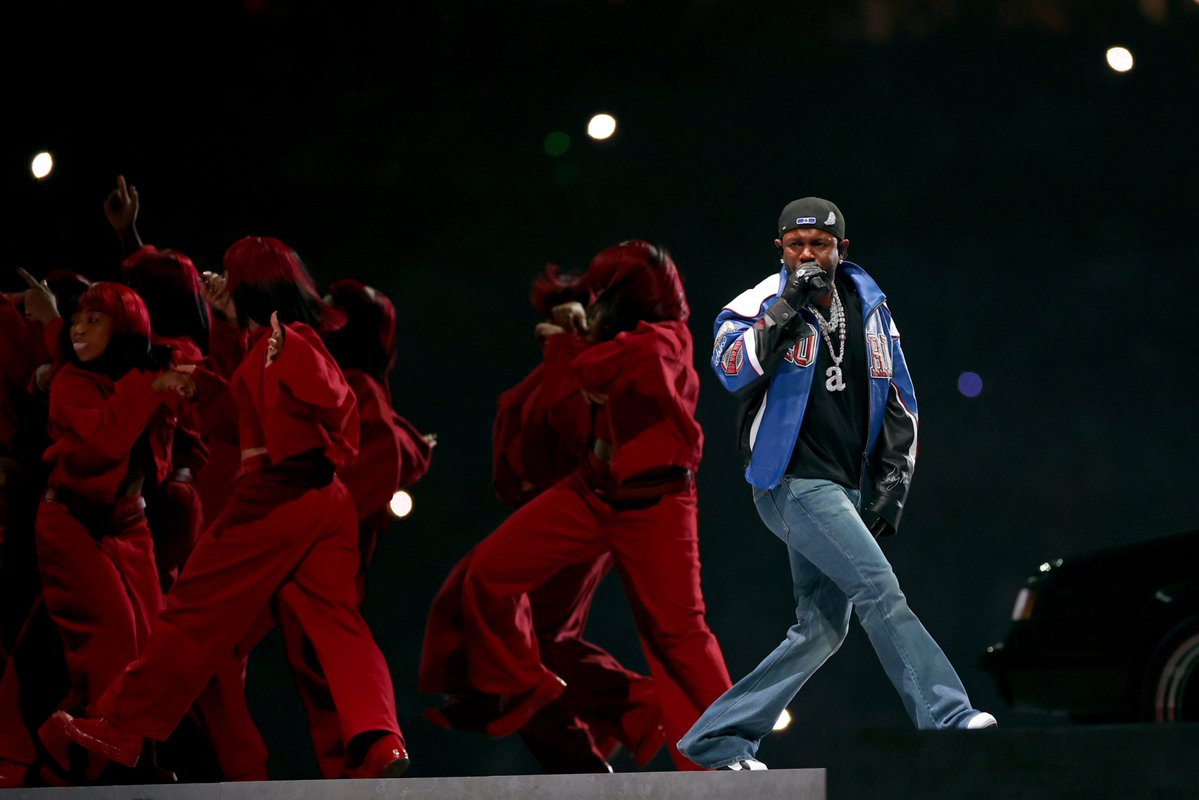Fans Are Left Speechless as Kendrick Lamar Delivers a Surprise Song at the Super Bowl
In the end, though, the vast majority of reactions celebrated Lamar’s willingness to take risks. The incident quickly became a case study in how live performance can serve as a catalyst for cultural discussion—a moment where art, law, and personal rivalry collided in real time.
V. Behind the Scenes: Halftime Show Protocols and the Art of Live Performance
For any artist stepping onto the Super Bowl halftime stage, the constraints are immense. The halftime show is famous not only for its star power but also for its strict regulations. Every performer must contend with a set list shortened to fit within a tight 13-minute window, ensuring that the show remains a high-energy medley rather than a full-length concert. Additionally, explicit language and certain gestures are heavily censored, given the broad, family-friendly audience that the Super Bowl attracts.
The Clock Is Ticking
Performers must be ready to take the stage within a six-minute window regardless of delays or other unforeseen issues. This means that every second is meticulously planned, rehearsed, and executed. Artists have little room for improvisation—a factor that makes Kendrick Lamar’s performance all the more impressive. Within those few precious minutes, he managed to deliver a performance that was both polished and dangerously daring, demonstrating not only his technical skill but also his ability to command the moment.
Navigating Censorship and Public Expectations
Censorship rules are another major hurdle. The broadcasting authorities enforce strict guidelines to ensure that the content remains appropriate for viewers of all ages. Yet, Lamar’s performance, with its raw energy and edgy lyrics, pushed the envelope. The fact that he chose to perform “Not Like Us”—a song already under legal scrutiny—within these limitations speaks to his commitment to authentic expression. It also raises questions about whether the traditional boundaries of the halftime show can—or should—be stretched in favor of artistic integrity.
Lessons from the Past
The stakes are high; the history of halftime shows is littered with cautionary tales. Remember M.I.A.’s infamous middle-finger display during Madonna’s performance at Super Bowl XLVI, which led to a hefty fine of $16.6 million. Incidents like these underscore the risks artists take when they choose to push boundaries on such a public platform. Kendrick Lamar’s calculated gamble, therefore, is not just a performance—it’s a statement about the evolution of live entertainment and the changing expectations of audiences in a digital age.
VI. The Rivalry: Kendrick Lamar Versus Drake
Central to the drama of the performance is the simmering rivalry between Kendrick Lamar and Drake—a feud that has grown over the years through a series of pointed diss tracks, public jabs, and heated debates among fans. Their ongoing conflict is one of the most talked-about in modern music, and every time one artist references the other in a live setting, the stakes are amplified.
The Historical Feud
Kendrick Lamar and Drake have long been compared as two of the most influential voices in contemporary hip-hop. While both have enjoyed immense success, their artistic approaches and public personas differ markedly. This contrast has fueled a rivalry that is as much about creative expression as it is about personal pride. Over the years, Lamar’s lyrics have occasionally taken aim at Drake, provoking strong reactions from both fan bases.
A High-Wire Act on the Big Stage
By choosing to perform “Not Like Us,” Lamar was not only reiterating his artistic message but also taking another direct shot at Drake. In his live set, the pointed references to Drake were delivered with such force that they resonated immediately with the audience and online commentators alike. The line, “Say, Drake, I hear you like ’em young / You better not ever go to cell block one,” was a moment that left many fans in disbelief, sparking waves of reaction on social media. For supporters of Lamar, it was a moment of vindication—a clear signal that he was unafraid to address the controversy head-on. For Drake’s loyalists, it only deepened the intrigue and tension surrounding the rivalry.
The Legal and Cultural Stakes
Complicating the matter further is the legal fallout surrounding “Not Like Us.” Drake’s lawsuit against Universal Music Group for the release of the track has only added fuel to the fire. This legal battle not only intensifies the personal stakes for both artists but also transforms the performance into a public commentary on the intersection of art, law, and personal vendettas. In performing the track live, Lamar embraced the controversy and positioned himself as a fearless provocateur—one willing to risk legal repercussions and public backlash in the name of artistic expression.
VII. The Social Media Storm: Reactions from Fans and Critics
